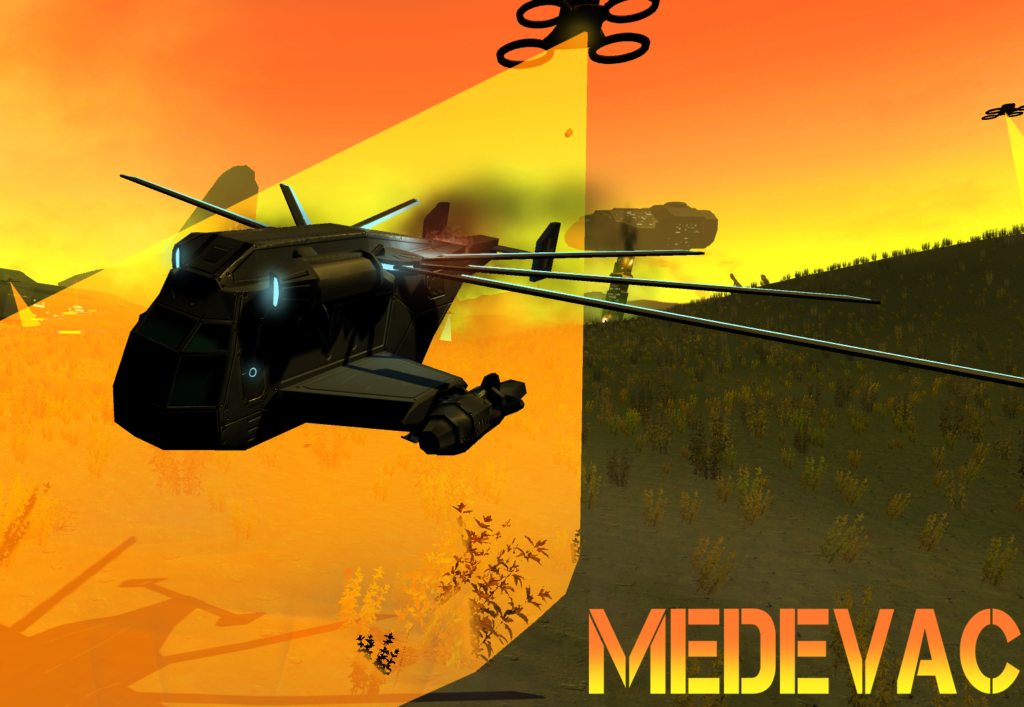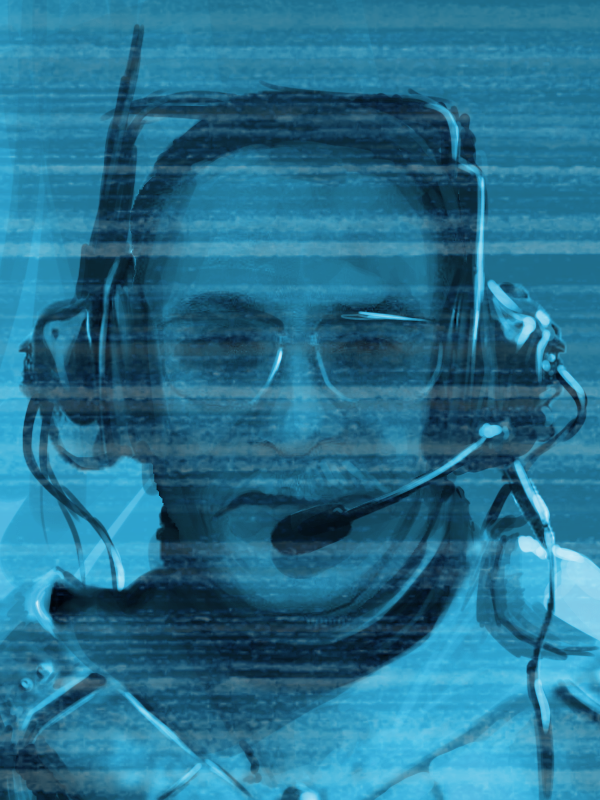
Medevac is a futuristic action game where the player pilots a rescue vehicle, saving soldiers instead of shooting them. The player can rescue soldiers on either side of the conflict, receiving different rewards and upgrades based on who they save.
Role: Team Lead/Narrative Designer
Tools: Unity, Adobe Illustrator
Platform: Windows
Dates Worked: January – May 2017
Medevac was a project for Game Production II, a class where teams of students spend a semester building a game, dispersing to the most promising projects halfway through. My initial task was designing the prototype for Medevac’s primary systems. I switched to narrative design when we went from 4 to 7 team members. The game was showcased at RPI’s Gamefest 2017.
In Medevac, the player’s objective is to save a minimum number of wounded soldiers before they perish. Soldier’s health bars indicate their condition as well as location, which the player uses to prioritize and plan the most efficient path possible. That path must also avoid a variety of dangerous enemy drones.


When players rescue friendly soldiers, they are rewarded with parts (blue) that improve their ship’s physical abilities. When players rescue enemy soldiers, they are rewarded (under the table) with schematics, (red) which improve how effectively the transport pods keep patients alive in transport. As well as affecting gameplay, upgrades are an important part of furthering the game’s narrative. The options give players strong incentive to save as many lives as possible.
Medevac’s narrative is delivered through radio chatter during missions. I wrote the scripts for the four chapters that we scoped in. They introduced the characters and their conflicting ideas of whether or not the player should be saving enemy soldiers.
Though the writing itself did need to communicate a lot of information, I tried to maintain the principle of “show, don’t tell” to keep players from tuning it out. To this effect, most lines of dialogue were delivered as direct responses to actions that the player took in game, rather than in a pre-scripted sequence.
Though the player would ultimately need to save soldiers from both sides to progress effectively, I wanted to make it really feel like the player’s choice. To encourage this, the mission after the player’s first opportunity to save an enemy featured different sets of voice lines based on what decision they made. Characters reacted strongly on both sides of the issue, but the player was ultimately pushed towards the greater good of saving as many lives as possible.

Moral choice in games often comes down to who to kill, so deciding who to save was a unique premise to tackle in Medevac’s narrative. One of the biggest challenges was communicating all of the necessary gameplay information, while still establishing unique character personalities, and engaging the central conflict. Writing for Medevac was a great exercise in making my dialogue do a lot of work in a short timeframe.
I was the sole designer on the project for the first half of development. Adding a dedicated systems designer to the team was ultimately a boon for the game in more ways than one, in that it necessitated I break down and evaluate what worked about Medevac’s core gameplay to a point where I could hand off that part of the design to someone else. This project was a thorough test of my team management skills. We had to reevaluate the scope of the project a couple of times, but through carefully managed sprint planning, we ultimately ended up with a game that players found unique and enjoyable.
